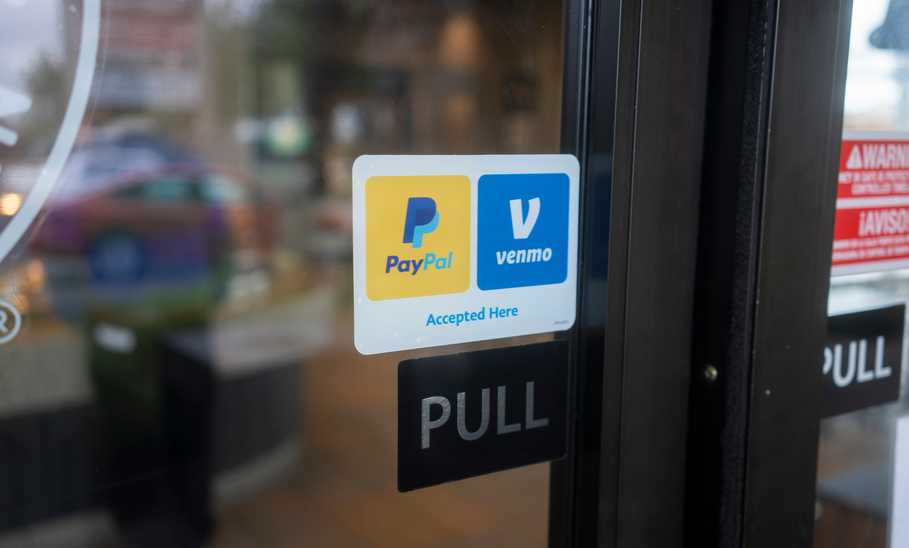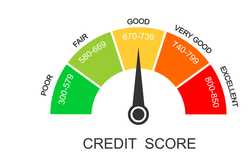Peer-to-peer (P2P) payment apps let you instantly send and receive money and make in-store and online purchases from your smartphone. Two of the more well-known apps are Venmo and PayPal. While the same company owns both, a few key differences might make one a better option for you. Here's a closer look at Venmo vs. PayPal to help you decide.
|
From free to 5%, depending on transfer type | | |
Up to $60,000 per transaction for verified accounts | Up to $5,000 per transfer to your bank, up to $10,000 per week into your Venmo account | Up to $1,000 per 30-day period for unverified accounts, may be higher for verified users |
| | |
What is Venmo?
Venmo is a P2P payment app offering a convenient way to pay and request money from friends and family when you don't want to deal with cash. Let’s say, for example, you want to send your roommate half the rent or request money to split a bill. You can also use Venmo to make purchases at authorized merchants and trade five different cryptocurrencies. Venmo was founded in 2009 and purchased by PayPal in 2013. It currently has more than 83 million users.
How do you use Venmo?
Download the mobile app (available on iOS and Android) or visit the Venmo website to get started. Sign up with your email or Facebook account, create a password, verify your phone number and email address, and add and verify your bank account. From there, you can send and request money, make purchases, and trade crypto.
Transfer money between friends and family
Sending and requesting money through Venmo is quick and straightforward.
- To send a payment, tap "Pay/Request" at the bottom of the Venmo app and enter the username of the person you want to pay, the amount you wish to send, and a note. Tap "Pay" to send the payment.
- To request a payment, click "Pay/Request" and enter the person's username, the amount, and a note. Tap "Request" to send the payment request.
Make purchases
You can use Venmo to make purchases with authorized merchants via:
- The Venmo debit card (anywhere in the U.S. where Mastercard is accepted).
- Authorized partner apps or websites.
- In-store QR codes.
- Venmo business profiles.
The company warns against using Venmo with people you don't know to make or accept payments for goods and services, such as concert tickets, electronics, sneakers, apartment deposits, or dog walking.
Buy and sell crypto
Through the Venmo app, you can buy, hold, transfer, and sell crypto—including Bitcoin, Bitcoin Cash, Ethereum, Litecoin, and the new PayPal USD (a stablecoin). Get started with as little as $1 by tapping the Crypto tab in the Venmo app. You'll pay a fee (ranging from a flat $0.49 to 1.50% of the amount) to buy or sell any cryptocurrency except PayPal USD, which has zero fees.
Venmo: pros and cons
Pros:
- Easy to send and receive money between friends and family
- $0 fee to send money from a linked bank account, credit card, or Venmo balance
- $0 fee for standard transfers from your Venmo balance to your bank account
- Optional debit and credit cards (including a teen debit card)
- Early direct deposit
- Buy, sell, and transfer crypto
- Social features and fun emojis
Cons:
- 3% fee to send money from a credit card
- 1.75% fee for instant transfers to your bank account
- Fees for buying and selling crypto
- No international transactions
- No interest earned on balances
What is PayPal?
PayPal has been in the digital commerce space for more than 25 years. The payment app for consumers and merchants is available in 200 countries (and 25 currencies) worldwide. PayPal has 426 million active accounts and facilitated 6.8 billion payment transactions in Q4 of 2023 alone.
How do you use PayPal?
Before you open a PayPal account, you'll have to decide if you want a personal or business account. A personal account is all you'll need to make online purchases or send and receive money. A business account lets you send invoices, receive payments, and accept credit and debit cards online and in person.
To get started, visit PayPal's website or download the app (available on iOS and Android) and click the blue "Sign Up" button. Choose the type of account you want, enter your details, and link a credit card, debit card, or bank account. From there, you can send and receive money, make online purchases, and more.
Send and receive money
Sending and receiving money through PayPal is fast and easy.
- To send money, tap "Send" and enter the payee's details, including their name and email address or mobile number. Enter the amount, include an optional message, and select if the payment is for "Friends and Family" (no fees) or "Goods and Services" (the recipient pays a fee).
- To receive money, tap "Request" and enter the payor's name, username, and email or mobile number. Alternatively, create a PayPal.Me link to share or send an invoice to get paid.
Make purchases
PayPal is accepted at millions of online stores in the U.S. and across 203 global markets without currency conversion hassles. You can use PayPal to make purchases by:
- Linking PayPal to a mobile wallet (like Google Pay).
- Using a PayPal-issued credit or debit card.
- Scanning a QR code at participating businesses.
- Set up recurring payments for your monthly bills and subscriptions.
Buy and sell crypto
As with Venmo, you can use PayPal to buy, transfer, and sell Bitcoin, Bitcoin Cash, Ethereum, Litecoin, and PayPal USD. To get started, go to "Finances" and select "Crypto" from your PayPal dashboard. There are no fees to buy or sell PayPal USD, and PayPal says it discloses an exchange rate and transaction fee when you buy or sell other cryptocurrencies.
PayPal: pros and cons
Pros:
- Available in 200+ countries and 25 currencies
- Accepted by millions of merchants
- Many transactions have zero fees
- High transaction and transfer limits
- Helpful tools for businesses, such as invoicing, reports, and tax forms
- Buy, sell, and transfer crypto
Cons:
- Complex fee structure
- Fees for business transactions
- High fees for international transactions
- 1.75% fee for instant transfers to your bank account
- Reputation for being aggressive with account freezes
Venmo vs. PayPal
|
| Sending and receiving money to and from friends and family | Making in-store and online purchases, accepting business payments, and international transactions |
| | |
| $0 if you send money from a linked bank account, debit card, or Venmo account 3% if you use a linked credit card | $0 if you use your PayPal or bank account balance 2.9% + $0.30 if you use a debit or credit card 5% fee (with a $0.99 minimum and $4.99 maximum) for international transactions |
| | |
| Venmo balance or a linked bank account, debit card, or credit card | PayPal balance or a linked bank account, debit card, or credit card |
| $7,000 combined weekly spending limit (including Venmo debit card and purchases) P2P limit is $299.99 per week if you haven’t completed identity verification—or $60,000 once you’re verified | $60,000 per transaction ($10,000 in certain situations) with no limit on the total amount you can send |
| | |
| $19,999.99 per week, with a $5,000 limit per transfer | |
Bank transfer fees & speed | 1 to 3 business days with no fee Instant with a 1.75% fee (with a $0.25 minimum and $25 maximum) | 1 to 3 business days with no fee Instant with a 1.75% fee (with a $0.25 minimum and $25 maximum) |
International accessibility | | Available in 200+ countries/regions with 25 currencies |
Venmo and PayPal similarities
Venmo and PayPal have a few similarities worth noting.
No fees to open an account
Venmo and PayPal don't charge fees to open an account or download the app.
Bank transfer fees and speeds
Venmo and PayPal let you transfer money from your account balance to your bank account in one to three business days with zero fees. Instant transfers incur a 1.75% fee (with a $0.25 minimum and $25 maximum).
Buy and sell cryptocurrencies
Venmo and PayPal offer the option to buy, sell, and transfer five cryptocurrencies directly through their apps.
Venmo vs. PayPal differences
Of course, there are some notable differences, too.
Transaction limits
Venmo has a $7,000 combined weekly spending limit and a weekly P2P limit of $60,000 for verified customers. PayPal offers more flexibility, with a $60,000-per-transaction limit and no limit on the total amount you can send.
Bank transfer limits
With Venmo, you can transfer $5,000 at a time, up to a penny short of $20,000 per week. PayPal lets you transfer $25,000 at a time, with no weekly limit.
International accessibility
Venmo only works in the U.S., while PayPal is available in 200+ countries with 25 currencies.
Where Venmo is better
Venmo is better for sending and requesting money from people you know, especially if you'll enjoy the social feed and fun emojis.
Where PayPal is better
PayPal offers more benefits for mid-sized and large businesses and has larger transaction and transfer limits.
Alternative apps
Venmo and PayPal are popular P2P payment apps but aren't your only options. If neither seems right for you, there are several other money transfer and payment apps to consider.
TIME Stamp: Venmo is best for personal use, PayPal for merchant and foreign transactions
Venmo and PayPal both offer the ability to send and receive payments, buy and sell cryptocurrencies, and have similar fees. In general, Venmo is best suited for personal use, such as sending and receiving money from friends and family. You can do the same via PayPal, but it is a better choice if you shop online or are a merchant accepting business payments. If you make international transactions on a regular basis, PayPal is the way to go, as Venmo is only available in the U.S.
Frequently asked questions (FAQs)
Why do people use Venmo instead of PayPal?
Venmo and PayPal have some similarities, but Venmo is generally considered a better option for sending and requesting money from friends and family.
Is Venmo or PayPal safer?
Venmo and PayPal use technology to safeguard your account and financial info while meeting industry data protection standards. Both companies use data encryption, secure connections, multi factor authentication, and fraud detection technology. PayPal also uses passkeys—a new login standard that lets you securely log in to your account without entering a username or password.
While these apps are generally secure, be aware that fraudsters might try to scam you. For instance, a criminal may reach out, claiming to be from the app's fraud department or a merchant, and ask you to confirm details like your bank account username and password, Social Security number, or credit card data. In another scam, the fraudster "accidentally" sends you money and asks you to send it back.
If you believe you're a victim of a P2P payment scam, notify the platform, contact your bank immediately, and file an online report at the FBI's Internet Crime Complaint Center.
What are the cons of Venmo?
Venmo's most significant limitation is that it's only available in the U.S. You won't be able to send or receive payments internationally. Additionally, transactions are public by default, which some users may not like (you can change your settings to make transactions private).
Does Venmo or PayPal have more fees?
Venmo and PayPal have similar fees. Both apps are free if you send money from a linked bank account or your account balance. If you use a linked credit card, the fee is 3% with Venmo and 2.9% + a fixed fee with PayPal. There is a 5% fee (with a $0.99 minimum and $4.99 maximum) for international PayPal transactions.





